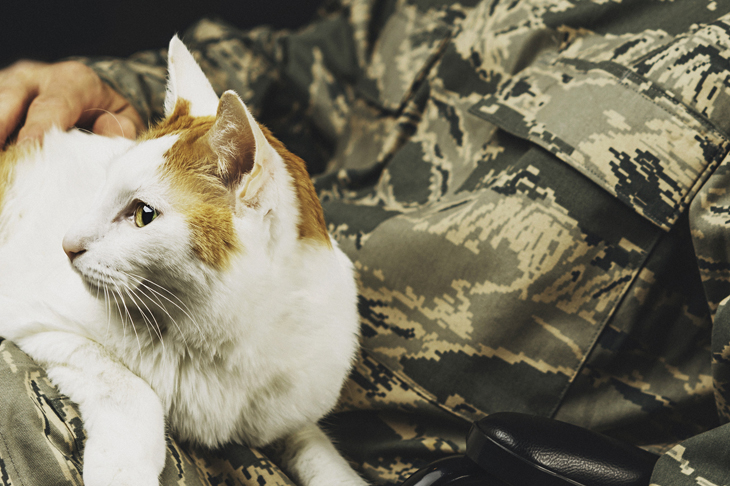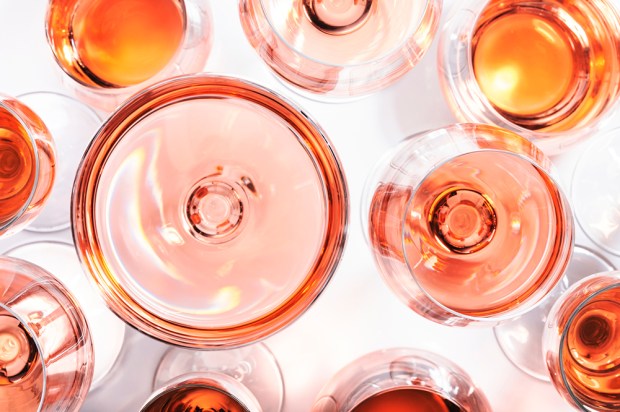Call me a sentimental old whatever, but watching a four-year old hearing The Tale of Samuel Whiskers for the first time, read by someone who could do the police in different voices, took one as far from the Waste Land as is possible. It also made me think about moggies, which brought back memories of a trip to Kabul. Outside the Portakabin where we were billeted, there was a notice: ‘Please do not bring cats into the living quarters.’ No one puts up an instruction like that without the expectation that it will be disobeyed. One can imagine why, and how very British. It is to the credit of the brutal and licentious, living in cramped conditions, exposed to constant danger, that they had sentimentality left for local felines.
A few of those were prowling near the entrance to the cabins. Although they did not look starving, they were not overnourished. But I am sure that they often benefited from military generosity. Camp Bastion would be a good posting for an Afghan cat. Anyway, we were eating our evening meal, which included a curious piece of sausage-type meat, of a reddish colour. Was it animal, vegetable or mineral? Perhaps we were being offered renditioned carcase broiled on depleted uranium. I chucked mine in the direction of a cat. After sniffing the offering as intently as an oenophile assessing a newly poured wine, the animal put its nose in the air and stalked off, with the air of a Belgravia Siamese rejecting inferior smoked salmon. The sausage was clearly corked. To a chorus of ‘If even that cat…’, most of my colleagues immediately discarded theirs.
I should have brought the sausage back for Professor Branestawm to analyse. This is a scientific friend of mine, who is also the most distinguished male feminist in these islands since John Stuart Mill. He has six daughters, who were each given a kitten. There was a rule: cats did not spend the night in the house. Feline cunning added to feminine wiles: one can imagine how strictly that rule was obeyed. The cats have taken after Moppet and Mittens rather than that wimp Tom Kitten. All good mousers and ratters, they relish hunting rabbits and have seen off foxes.
The girls’ education did not consist only of fluff and fur. Their father insisted that, at least until O-level, the core curriculum should include Latin, physics and maths. But there was little need to keep them up to the mark. Academically, they thrive, as in other respects. In the interests of diversity and the environment, the Professor decreed that the girls must learn to shoot. All have, proficiently. In every respect, this household triumphantly refutes the claim that the number of daughters a man has is in proportion to his wickedness in a previous life.
After such a contribution to equality, a chap is entitled to a decent glass of wine. The other evening, he produced a ’95 Léoville Barton. Mature, harmonious as the ‘Pastoral’ in the hands of a great symphony orchestra, it would surely be hard to surpass. But a ’97 Margaux succeeded. As so often, the 1855 classification was vindicated. The first growth was an even higher peak. I have always insisted that whereas you drink a Pauillac, you undress a Margaux. This wine justified that dictum. It had femininity, structure, subtlety and power. It proves a point which the Professor’s daughters can take for granted. A girl can succeed in a man’s world.
But there may be an exception. In Bordeaux, the house of Latour still towers over the landscape, that most masculine of clarets. Although it is not always the greatest wine of the year, it does win the blue riband more often than not. We finished with a ’99, the highest peak, still shrouded in mist. Grandeur awaits, but that wine needs several years. If they are good girls — or perhaps even if they are naughty ones — the Professor’s daughters might be drinking that wine in decades to come.
Got something to add? Join the discussion and comment below.
Get 10 issues for just $10
Subscribe to The Spectator Australia today for the next 10 magazine issues, plus full online access, for just $10.















Comments
Don't miss out
Join the conversation with other Spectator Australia readers. Subscribe to leave a comment.
SUBSCRIBEAlready a subscriber? Log in